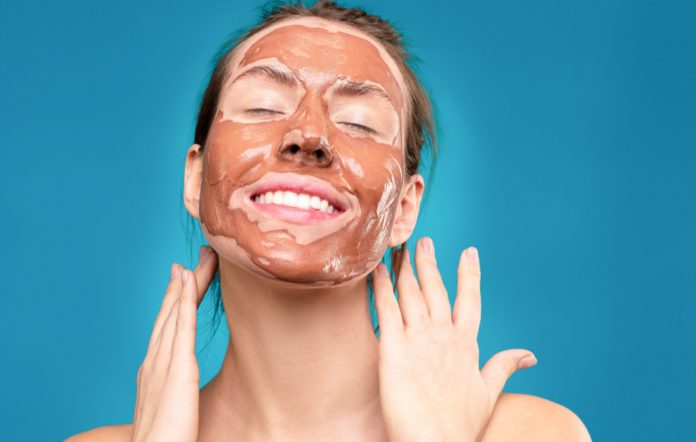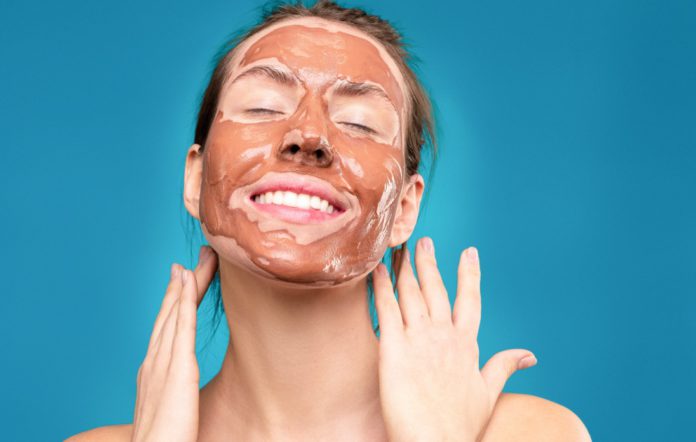“You got mud on your face
It’s a blessing and a grace
Shining beauty all over the place
This will this will rock you”
If you know the lyrics of the original song, this will probably not impress you by any means. However, I took a chance. This is because I am a lover of both mud and this song. I feel good when I have got mud on my face. Now here, I am not talking about the mud that is found on the street after the rainy season. But the mud that is available in special corners of the world.
I searched for different mud masks on the internet. All impressed and enlightened, I bought some mud masks available in the superstores nearby. On a weekly visit to my grandma’s, I told her about the good effects of the mud masks that I am applying. She started grinning. I was a little irritated by this. On asking her the reason, she told me that she has been applying mud on her face and skin since her childhood. “What?” I was pleasantly surprised. I used to wonder why on earth she doesn’t have pimples in spite of relishing pickles or not applying any of the face washes that I give her. I asked her why she didn’t reveal her secret. She squirmed and told me that on several occasions she had already asked me to use the mud, but it was me who laughed off her suggestions.
Now that I have got her secrets, let me give you a peek into the world of clays that have been invigorating the skin of beautiful women around the world. The basic benefit of using clay is that it helps absorb the impurities that the skin encounters when exposed. Plus, it even helps the skin in healing. There are different types and colours of clay that are used as masks around the world. Every kind of clay has its own unique properties and should be used appropriately.
Types of Muds and Benefits of Mud for Face
1. Fuller’s Earth Clay
Fuller’s earth or Multani Mitti is easily available, even at a grocery store. Minimally priced, I am a fan of this clay. It helps absorb excess oil on my skin and helps it keep pimple-free. The clay even has mild bleach that helps in improving the complexion of the skin.
How to use: Mix a little amount of clay with rose water and raw milk and apply it as a mask, once a week.
Highly recommended: for oily skin. People with normal skin can try it too. However, people with dry skin, please stay away from fuller’s earth. If your skin is prone to dryness in the winter season, do not use it.
2. Brazilian Clay
Available in several colours viz. pink, yellow, natural, purple, gold, black and dark red, Brazilian clay is a kind of kaolin clay. If you are wondering about the different hues of this clay, then you will be surprised to know that it actually available in these many colours, without any use of dyes. The shade of the clay depends on the amount of mineral in the soil; depending on the region it is found.
Unlike fuller’s earth, Brazilian clay does not absorb much and hence, this makes it suitable for several skin types. Brazilian white clay is rich in Silicon while Brazilian red clay is high in iron. Rich in vitamins and minerals like copper and selenium, Brazilian brown clay is good for oily skin while Brazilian purple clay is high in magnesium. Brazilian black clay is loaded with natural titanium while Brazilian gold clay is rich in potassium.
How to use: depending on the type of colour and skin type, Brazilian Clay can be mixed with water, yoghurt, honey or other liquids
Highly recommended: White clay offers smoother skin, Red clay is good for toning and elasticity, Brown clay and Black clay are suitable for oily skin, Purple clay is suitable for anti-ageing masks, Pink Clay is quite gentle and suitable for sensitive skin and Gold clay restores minerals in the skin and is even an astringent
3. Bentonite Clay
Created using volcanic ash, it is quite popular among people who are prone to pimples. Bentonite Clay has excellent oil-absorbing properties and is a common ingredient in beauty products designed for acne-prone skin. When the clay is mixed with water, it becomes negatively charged. Impurities and toxins being positively charged get attracted to the clay and are removed. People suffering from skin ailments related to fungus and bacteria should make use of Bentonite clay. It even clears surplus sodium present on the face. The clay also helps in skin tightening.
How to use: Mix it with water or as recommended.
Highly recommended: for oily skin, skin prone to pimples and acne, skin suffering from fungus or bacterial infection. Please take dermatologist’s advice before using it.
4. Kaolin Clay
Just like Brazilian clay, kaolin clay is available in several colours. However, the most common one is off-white. It is very fine in texture and is available in powder form. The fine texture of the clay makes it easy to use it with various other ingredients appropriate for face masks. Surprisingly, the clay is used even for eye shadows and other cosmetic products.
How to use: Mix Kaolin Clay with water and apply it evenly on your face. For sensitive skin, mix it with oatmeal, while for acne-prone skin, use it with yoghurt.
Recommended for: White clay being gentle is apt for sensitive and dry skin, Yellow clay is good for exfoliation, Red clay is apt for oily skin and detox masks, Pink clay is ideal for oil-vacuuming masks
5. Rhassoul Clay
Found in Morocco, Rhassoul clay is loaded with minerals. Being negatively charged, the clay helps attract toxins and other impurities from the skin. If you suffer from blackheads or sebum plugs, try using Rhassoul clay for benefits. Unlike other clays, this clay does not absorb moisture from the skin due to its elasticity. Quite gentle, the clay even offers volume and shine to hair.
How to use: Mix it with crushed oats or even almonds for exfoliation.
Highly Recommended: to remove excess oil and impurities from the skin
Also Read: Homemade Flour Based Face Packs for Flawless Skin
Other Clays
1. French Green Clay
French Green Clay is good for exfoliation as well as tightening open pores. It even helps in absorbing excessive oil on the face. Popularly known as sea clay, this clay derives it colour from the decomposed plants. The presence of iron oxide in the clay is good for the skin too. As the name reveals, the clay originates from France.
2. Green Zeolite Clay
Zeolites refer to microporous minerals. These minerals form during the reaction of volcanic rocks with groundwater, which is quite alkaline in nature. The texture of this clay is large as compared to other clays. It also has high absorption and exfoliation power. It is highly recommended for oily skin.
3. Rose Clay
Apt for dry skin, Rose Clay is a variety of Kaolin Clay. The presence of iron oxide in the clay gave it the pink shade and this led to it being named Rose clay.
Conclusion
I have become a big fan of clay masks now. Once I applied a layer in the morning and stepped out in the living room my toddler daughter was so scared of me that she started screaming. This worried my husband who came running to the living room. The situation made all of us laugh but the little one was kept on crying till I washed the thing off. Hence, here’s a word of advice, keep the clay masks a beauty secret and do not step out in the open when you have applied them.


